"Cherishing Little Steps - A Haven for Baby and Family Journeys"
Early Childhood Education Fundamentals
When it comes to early childhood education, there are several fundamental aspects that play a crucial role in shaping a child’s development. From the importance of play to nurturing learning environments, building communication skills to cognitive development, there is a wide range of factors that contribute to a child’s growth and learning.
But what exactly are these fundamentals, and why are they so essential? Exploring these key elements will provide you with a deeper understanding of the foundations of early childhood education and how they can positively impact a child’s future.
Key Takeaways
- Play is crucial for fostering creativity, imagination, cognitive development, problem-solving skills, spatial awareness, and logical reasoning.
- Imaginative play helps children explore different roles, develop empathy, and enhance social skills such as cooperation, negotiation, and conflict resolution.
- Nurturing learning environments that are physically and emotionally safe encourage creativity, imagination, and open-ended play, which promote social-emotional development and communication skills.
- Cognitive development in early childhood, including memory development and problem-solving skills, lays the foundation for future learning, and language acquisition is essential for communication and social interaction.
The Importance of Play
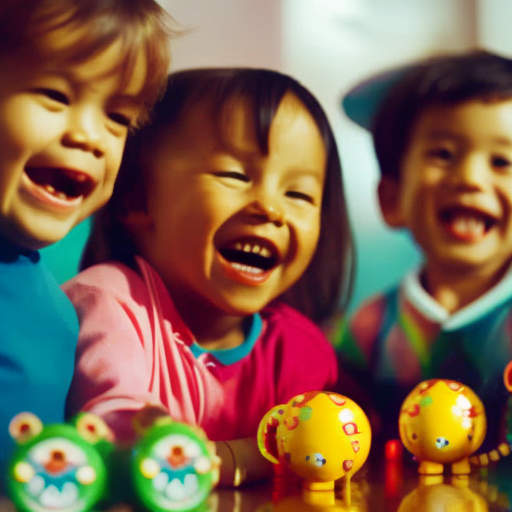
Play is a vital component of early childhood education, fostering creativity, imagination, and crucial cognitive and social development. Engaging in imaginative play has numerous benefits for young children.
One of the key benefits is the development of problem-solving skills. Through play, children are presented with various scenarios and challenges that require them to think critically and come up with solutions. For example, when playing with building blocks, children must figure out how to create structures that are stable and balanced. This type of play enhances their spatial awareness, mathematical thinking, and logical reasoning.
Moreover, imaginative play allows children to explore different roles and perspectives. By pretending to be doctors, teachers, or firefighters, they develop empathy and learn to understand different viewpoints. This helps them develop their social skills, such as cooperation, negotiation, and conflict resolution.
Additionally, imaginative play enhances language development as children engage in conversations, storytelling, and role-playing.
Social-Emotional Development

As children engage in imaginative play, they not only develop problem-solving skills but also lay the foundation for their social-emotional development. This crucial aspect of early childhood education encompasses self-regulation and empathy development, which are vital for healthy relationships and overall well-being.
Self-regulation refers to a child’s ability to manage their emotions, behavior, and attention. Through play, children learn to navigate challenging situations, regulate their impulses, and develop self-control. This skill set helps them cope with stress, make responsible decisions, and build positive relationships with others.
Empathy development is another key aspect of social-emotional development. When children engage in imaginative play, they gain a deeper understanding of different emotions, perspectives, and experiences. This understanding forms the basis for empathy, allowing children to recognize and respond to the feelings of others. Empathy fosters kindness, compassion, and cooperation, essential qualities for building healthy relationships.
To summarize the importance of social-emotional development in early childhood education, refer to the table below:
| Self-Regulation | Empathy Development |
|---|---|
| Regulating emotions, behavior, and attention | Understanding emotions, perspectives, and experiences |
| Building self-control and responsible decision-making | Cultivating kindness, compassion, and cooperation |
| Coping with stress and forming positive relationships | Recognizing and responding to the feelings of others |
Nurturing Learning Environments
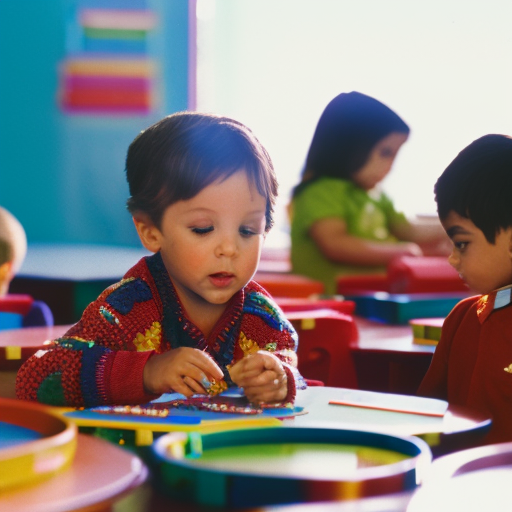
Creating a nurturing learning environment is essential for fostering optimal growth and development in early childhood education. By creating a safe space for learning, you can help children feel comfortable and supported in their educational journey. This means providing a physically safe environment, free from hazards, where children can explore and engage in hands-on activities. It also means creating an emotionally safe space, where children feel valued, respected, and encouraged to express themselves.
Encouraging creativity and imagination is another crucial aspect of nurturing learning environments. By incorporating activities that stimulate the imagination, such as storytelling, pretend play, and art projects, you can help children develop their creative thinking skills. This allows them to explore new ideas, problem-solve, and think outside the box. Providing open-ended materials and opportunities for children to engage in imaginative play can also foster their social and emotional development, as they learn to cooperate, negotiate, and communicate with others.
Building Communication Skills

To further enhance the nurturing learning environment, it’s essential to focus on building strong communication skills in early childhood education. Effective techniques for building communication skills in young children include:
-
Encouraging open-ended conversations: Engage children in meaningful conversations that allow them to express their thoughts and feelings. This helps them develop language skills and learn how to communicate effectively.
-
Active listening: Paying attention to what children are saying and responding thoughtfully shows them that their words are valued. This fosters trust and encourages them to communicate more openly.
-
Non-verbal communication: Teach children to understand and use non-verbal cues such as facial expressions, gestures, and body language. This helps them better express themselves and understand others.
-
Parent involvement: Encouraging parents to be actively involved in their child’s education can greatly enhance communication skills. Providing resources and guidance to parents on how to engage in meaningful conversations at home can reinforce what’s being taught in the classroom.
Cognitive Development
Cognitive development in early childhood is a crucial aspect of your child’s overall growth and learning. During this stage, their brain is rapidly developing, and they’re acquiring new skills and abilities that will lay the foundation for future learning. Two important aspects of cognitive development during this time are memory development and problem-solving skills.
Memory development plays a significant role in your child’s ability to retain and recall information. At first, their memory is limited, but as they grow, it expands, allowing them to remember more complex information. Encouraging activities that promote memory, such as reading, storytelling, and playing memory games, can help enhance this skill.
Problem-solving skills are another essential aspect of cognitive development. As your child encounters various challenges, they learn to analyze, strategize, and find solutions. This skill helps them navigate through everyday situations and prepares them for more complex problem-solving tasks in the future. Engaging in puzzles, building blocks, and pretend play can all contribute to the development of their problem-solving abilities.
Language Acquisition

Language acquisition is a fundamental aspect of early childhood development, as it lays the groundwork for communication and social interaction. During this crucial period, children learn to understand and use language, which opens up a world of possibilities for them.
Here are some important points to consider about language acquisition:
-
Bilingualism benefits: Research shows that exposing children to multiple languages from an early age can have numerous benefits. Bilingual children tend to have better cognitive skills, enhanced problem-solving abilities, and improved flexibility in thinking. They also have a broader cultural understanding and can connect with a wider range of people.
-
Speech development milestones: Children go through various stages of speech development as they acquire language. From babbling and cooing in their early months to saying their first words, forming sentences, and eventually engaging in complex conversations, each milestone is a significant step in their language journey. It’s important to support and encourage children during these stages to foster their linguistic development.
-
Language immersion: Creating an environment rich in language is crucial for children’s language acquisition. Engaging in conversations, reading books, singing songs, and providing exposure to different types of language experiences can help children develop their language skills.
-
Individual variations: Every child has their own unique language acquisition journey. Some may be early talkers, while others may take a little longer to start speaking. It’s important to remember that each child develops at their own pace, and providing a supportive and nurturing environment is essential for their language development.
Fine Motor Skills Development

Now let’s explore the development of fine motor skills, which play a crucial role in your child’s ability to manipulate objects and perform tasks that require precise movements. Fine motor skills involve the coordination of small muscles, such as those in the hands and fingers, to accomplish tasks like writing, buttoning a shirt, or using scissors.
As your child grows, they’ll reach important milestones in their fine motor skills development. In the early years, they’ll begin to grasp objects with their whole hand and later progress to using their fingers to pick up smaller items. They’ll also learn to use tools like crayons and utensils, refining their grip and control over time. By the age of five, children should be able to tie their shoelaces, cut with scissors along a straight line, and draw recognizable shapes.
To support your child’s fine motor skills development, engage them in activities that encourage hand-eye coordination and finger dexterity. Simple activities like stringing beads, playing with building blocks, or drawing with chalk can help strengthen their hand muscles and improve their control. Encourage them to practice using utensils and engaging in arts and crafts projects that require precise movements.
Gross Motor Skills Development
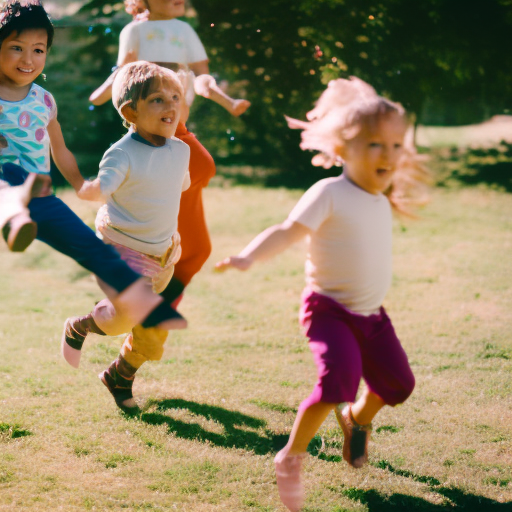
To develop your child’s gross motor skills, focus on activities that involve large muscle groups and encourage movement and coordination.
Here are some fun and engaging ways to promote your child’s physical development:
-
Outdoor play: Let your child run, jump, and climb in the playground. Encourage them to explore different environments, such as parks or nature trails, to enhance their body coordination.
-
Dancing: Put on some lively music and dance together. This activity not only improves body coordination but also boosts your child’s confidence and creativity.
-
Obstacle courses: Create an obstacle course using pillows, cushions, and hula hoops. Guide your child through the course, emphasizing balance and coordination.
-
Sports: Introduce your child to team sports like soccer or basketball. These activities teach body coordination and foster social skills.
Sensory Exploration
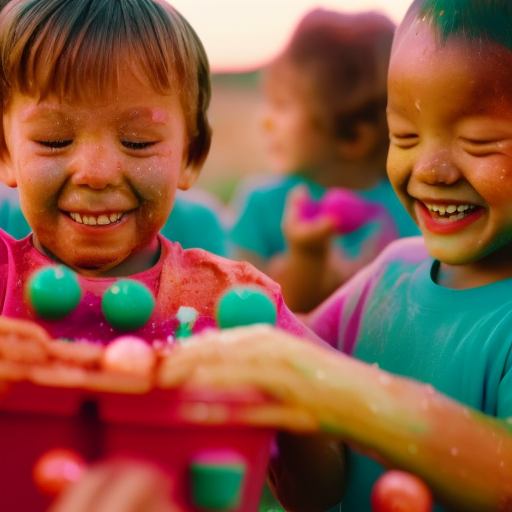
Engage your child’s senses through sensory exploration activities that promote learning and development. Sensory integration plays a crucial role in early childhood education as it helps children make sense of the world around them. By stimulating their senses of touch, smell, taste, sight, and hearing, children can develop important cognitive, physical, and social skills.
Sensory exploration activities provide opportunities for children to explore and understand their environment. They can engage in activities such as finger painting, playing with sand or water, or even experiencing different textures through sensory bins. These activities not only stimulate the senses but also enhance fine motor skills, hand-eye coordination, and problem-solving abilities.
For some children, sensory processing disorders may present challenges in their ability to process sensory information. Sensory integration activities can help children with these disorders by providing a structured and supportive environment for sensory exploration. By gradually exposing them to different sensory experiences, children can develop strategies to manage sensory input and improve their overall sensory processing abilities.
Incorporating sensory exploration into early childhood education not only fosters a love for learning but also supports children’s social-emotional development. By engaging their senses, children can develop a deeper understanding of the world around them, leading to improved cognitive abilities, self-regulation skills, and overall well-being.
Cultural Awareness and Diversity
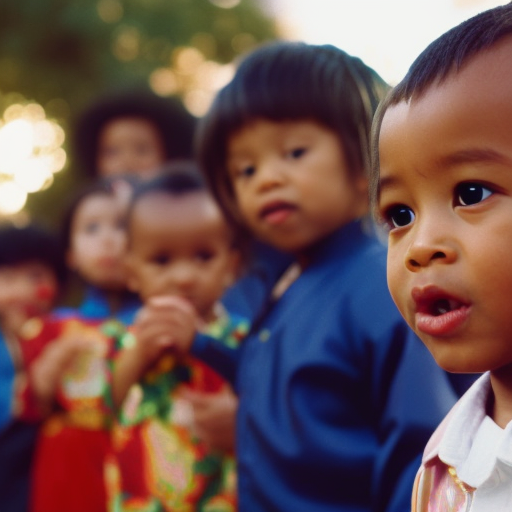
Children in early childhood education should embrace cultural awareness and diversity to develop a deeper understanding and appreciation of the world around them. By fostering cultural sensitivity and implementing an inclusive curriculum, educators can create a nurturing environment that celebrates differences and promotes empathy. Here are four reasons why cultural awareness and diversity are crucial in early childhood education:
-
Promotes acceptance and respect: Exposing children to diverse cultures from a young age helps them recognize and appreciate the uniqueness of others. This fosters an environment of acceptance and respect, where children learn to value diversity and treat everyone with kindness.
-
Enhances social skills: Interacting with peers from different backgrounds allows children to develop strong social skills. They learn to communicate effectively, navigate cultural differences, and collaborate with others, preparing them for a diverse and interconnected world.
-
Broadens perspectives and knowledge: Learning about different cultures expands children’s horizons and broadens their perspectives. It exposes them to new ideas, traditions, and ways of life, sparking curiosity and encouraging them to become lifelong learners.
-
Builds empathy and understanding: Cultural awareness cultivates empathy and understanding in children. They learn to see the world through others’ eyes, develop compassion, and embrace diversity, fostering a sense of global citizenship.
Frequently Asked Questions
What Are the Key Components of a Quality Early Childhood Education Program?
To ensure a quality early childhood education program, key components include a supportive and stimulating environment, knowledgeable and caring teachers, developmentally appropriate curriculum, and ample opportunities for play and social interaction.
How Can Parents Support Their Child’s Social-Emotional Development at Home?
Creating a supportive environment at home is crucial for your child’s social-emotional development. Encourage open communication, active listening, and teach emotional regulation techniques. By modeling positive behaviors and providing a safe space, you can help them thrive.
What Strategies Can Educators Use to Create a Nurturing Learning Environment?
To create a nurturing learning environment, educators can use strategies for behavior management and foster a sense of belonging. By setting clear expectations, providing positive reinforcement, and building strong relationships, you can create a safe and supportive space for children to learn and grow.
What Are Some Effective Techniques for Building Communication Skills in Young Children?
To build communication skills in young children, focus on building their vocabulary and enhancing their listening skills. Encourage them to talk and ask questions, provide opportunities for active listening, and engage in activities that promote language development.
How Does Early Childhood Education Impact Long-Term Cognitive Development and Academic Success?
Early childhood education sets the foundation for your child’s long-term cognitive development and academic success. It shapes their thinking abilities and prepares them for future learning. It’s like rocket fuel for their brain!
Conclusion
You’ve learned about the essential fundamentals of early childhood education.
Did you know that research shows that children who participate in high-quality early childhood education programs are more likely to graduate from high school, attend college, and have successful careers?
Investing in early education not only benefits children in their formative years but also has long-term positive effects on their future success.
So let’s continue to prioritize and support early childhood education for a brighter future for all children.


